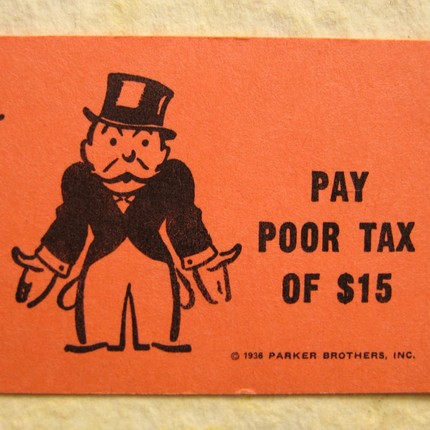Co-authored with Bill Zettler
In the March 28, 2011 issue of the Weekly Standard, Eli Lehrer, Vice-president of the Heartland Institute, a premier think-tank based in Illinois, wrote an article entitled “Pensions Aren’t the Problem.” Lehrer puts forth the argument that defined-benefit state pensions, not only were not in trouble, but were a good way for states to recruit talent at little expense.
While Heartland does some fine work, in this case, we have to disagree with their analysis. All too often of late the positions of NASRA (National Association of State Retirement Administrators), an organization of self-interest and self-righteousness not unlike their sister organization the NEA (National Education Association), have not received the critical examination they are due. After all, if all state employees were on Social Security and 401K programs there would be no need for state retirement administrators and their staff of thousands.
Let’s go through Mr. Lehrer’s major claims one by one:
CLAIM: “…pension benefits represent a reasonably small share of overall state spending (3.4 percent in Illinois).”
FACT: The way you come up with what appears to be a minuscule percentage of state spending is as follows:
- Use total state revenues including capital expenditures, Federal Medicaid, and education reimbursement as the divisor in your calculation. (As every state retirement administrator knows neither capital expenditures, Federal Medicaid, or education dollars are available to pay pensions. Only General Revenue Funds–income tax, corporate tax, sales tax, etc.–can be used to pay pensions, and in Illinois that number is less than half of total revenue, thereby more than doubling NASRA’s claimed percentage.)
- Use 2008 data bypassing the great meltdown of 2009. (Even with that, if the correct number for General Fund revenue had been used, the percentage would be 8.2%.)
- Ignore the pension expense of bond payments on pension bonds. (Because if you include it, the percentage rises to 9.8%.)
Additionally, if you use the upcoming fiscal year 2012 numbers, which start July 1, 2011 for Illinois, instead of data from 2008, the percentage jumps to 24%–$6.4 billion (including pension bond interest) out of $27 billion for the state general fund tax revenue. Using 2015 projections, State Auditor William Holland has stated that pension funding will be about $8 billion including pension bond payments. At that point, pension costs including pension bond payments will exceed 25% of state general fund tax revenue–about twice the states portion of Medicaid and the largest single line item in the budget by far.
CLAIM: “…states usually cannot change promised pension benefits without a constitutional amendment.” And besides, “Pensions, in short, aren’t the main cause of state budget problems…”
FACT: That is true only if you can convince the taxpayers that pension costs are a small percentage of revenue using the calculations already discussed. But due to past transgressions, the teacher unions and self-interested parties like NASRA may have overused their tiny human shields (“It’s for the kids”) to the point of an ever decreasing credibility with the public. Once the Illinois taxpayers (95% of workers) understand that 25% or more of their taxes are going to pay public pensions (5% of workers), that could change significantly.
And regarding the “insurmountable obstacle” of a constitutional guarantee, in Illinois only 300,000 signatures are required to put an amendment on the 2012 ballot to remove it. That amount of signatures should be eminently doable once taxpayers understand the true situation, and would have the added benefit of bypassing the sclerotic, union-controlled mess we call state government.
CLAIM: “[State pensions are] in better shape than some assume”
FACT: States look to be in good shape only by using “pretend” numbers for their balance sheet. Asset losses are averaged, smoothing them out, and more importantly pension liabilities are under estimated by using high interest rate assumptions, such as Illinois’ TRS (Teacher Retirement System), which uses 8.5%. Using corporate required pension interest rates of about 6% or Social Security’s assumed interest rate of about 4.5% there are no state pensions in good financial shape. Using 6% in Illinois would increase the unfunded liability to about $125 billion from an already unfathomable $85 billion, and using 4.5% ups the ante to $200 billion. Pretending you are going to get an 8.5% return on your investment for the next 35 years does not make it so.
CLAIM: “State governments never go out of business and can count on rising gross revenues so long as their populations grow. (All states but Michigan grew between 2000 and 2010.)”
FACT: According to the Census Bureau, Illinois did indeed grow its population by 3% between 2000 and 2010. But keep in mind the Census counts everybody–citizen and immigrant, legal and non-legal alike. Illinois’ 3% growth was all due to non-citizens, since a recent Illinois Policy Institute study appropriately entitled “Leaving Illinois” detailed how 1.2 million citizens have left for other states between 1991 and 2009, taking $16.9 billion worth of state and local taxes with them. This study definitively shows that taxpayers are leaving and being replaced with non-taxpayers or at the very least lesser taxpayers. Recent tax increases will just accelerate this “out-migration” process.
But even granting Illinois the 3% population growth for the last decade, the following chart shows how the growth of teacher salaries and pension payouts so far outstrips population growth that the future for taxpayers is indeed grim.
Finally, Mr. Lehrer’s conclusion that “pensions… have been a target of opportunity” is incorrect based upon the facts we have outlined. Unfortunately he is not the only one drinking the NASRA/NEA/IEA Kool-Aid in the heartland, after all, NPR picked up the Weekly Standard article. What better affirmation could a libertarian have than that?
Pension research and analysis provided by Bill Zettler. To read more about Illinois’s pension problems, click here.


COMMENTS
Please let us know if you're having issues with commenting.